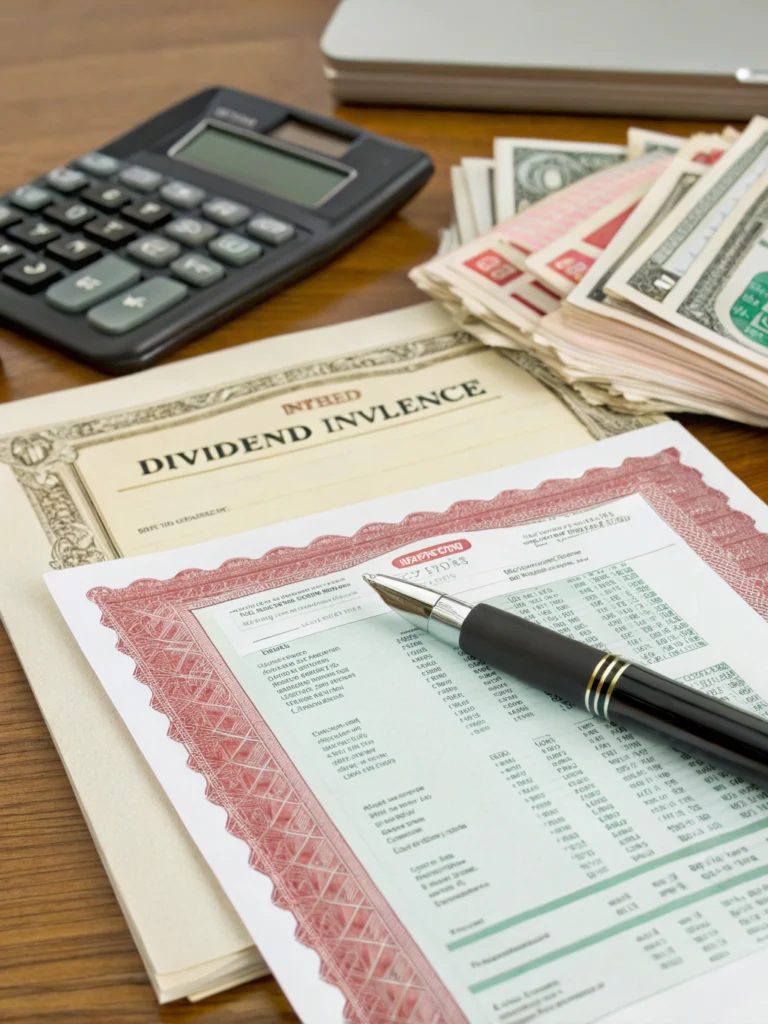Table of Contents
Introduction
Did you know that 84% of millionaire investors include dividend-paying stocks in their portfolios? It’s a staggering statistic that challenges the common belief that growth stocks are the only path to significant wealth creation. What if the steady, reliable income stream from dividend investing could be your ticket to financial freedom? In today’s volatile market environment, more investors are discovering the power of dividends to provide stability, generate passive income, and build long-term wealth through the magic of compounding. Why wait to grow your wealth when dividend strategies can provide both immediate returns and long-term growth potential?
Key Concepts Overview
Dividend investing centers around purchasing shares in companies that regularly distribute a portion of their profits to shareholders. Unlike growth investing, which focuses primarily on price appreciation, dividend strategies offer a dual benefit: potential stock price growth plus regular income payments.
The dividend yield—calculated by dividing the annual dividend by the current share price—serves as a key metric for investors. For example, a company trading at $100 per share that pays $3 annually in dividends has a 3% yield. While this might seem modest compared to potential growth stock gains, the power lies in consistency and compounding over time.
What makes dividend investing particularly attractive is the concept of “getting paid to wait.” Even during market downturns when share prices might decline, dividend payments typically continue, providing a cushion against volatility and a psychological boost that helps investors stay the course.
Statistics and Insights
The data behind dividend performance tells a compelling story. According to Hartford Funds, dividend-paying stocks in the S&P 500 delivered an average annual return of 9.5% over the past 50 years, compared to just 4.3% for non-dividend payers. Even more impressively, companies that consistently increased their dividends performed best of all, with average annual returns of 10.7%.
During market downturns, the advantage becomes even clearer. In 2022, when the S&P 500 dropped approximately 19%, the S&P 500 Dividend Aristocrats (companies that have increased dividends for at least 25 consecutive years) outperformed with losses limited to about 6.2%.
Another striking insight: dividends have accounted for approximately 40% of the S&P 500’s total return since 1930. This means that without dividend reinvestment, investors would have missed nearly half of the market’s wealth-building potential over the long term.
Step-by-Step Guide or Strategy
Step 1: Determine Your Dividend Investing Goals
Before diving into specific stocks, clarify whether you’re seeking current income, long-term growth, or a balance of both. If you need regular income now (perhaps for retirement), focus on higher-yield investments. If your time horizon is longer, consider dividend growth companies that might start with lower yields but increase payments consistently over time.
Pro Tip: Your age minus 15 can serve as a rough guideline for the percentage of your portfolio to allocate to dividend stocks. A 45-year-old might aim for approximately 30% in dividend payers, while a 65-year-old might allocate 50% or more.
Step 2: Research Quality Dividend Stocks
Look beyond high yields to find quality companies with sustainable dividend programs. Key metrics include:
- Dividend payout ratio (typically below 60% is sustainable)
- History of dividend increases (seek companies with 10+ years of consecutive raises)
- Strong cash flows and manageable debt levels
- Competitive advantages that protect profit margins
Warning: Extremely high dividend yields (above 7-8%) often signal potential trouble. The market may be anticipating a dividend cut or reflecting other significant company problems.
Step 3: Build a Diversified Dividend Portfolio
Spread your investments across multiple sectors to reduce risk. Utilities and consumer staples typically offer higher yields but slower growth, while technology and healthcare might offer lower initial yields but faster dividend growth rates.
Bonus Insight: Consider using dividend ETFs for instant diversification. Funds like SCHD (Schwab U.S. Dividend Equity ETF) or VYM (Vanguard High Dividend Yield ETF) provide exposure to dozens or hundreds of dividend payers with a single purchase.
Potential Challenges and How to Overcome Them
Dividend investing isn’t without pitfalls. The most common mistake is chasing yield without considering dividend sustainability. Companies offering unusually high yields may be experiencing financial distress, making those attractive payments vulnerable to cuts.
Tax implications represent another challenge. In taxable accounts, dividend income is subject to taxation—qualified dividends at preferential rates and ordinary dividends at your marginal tax rate. To overcome this, consider holding dividend stocks in tax-advantaged accounts like IRAs when appropriate, or focus on qualified dividend payers in taxable accounts.
Rising interest rates can temporarily pressure dividend stocks as fixed-income alternatives become more competitive. During such periods, focus on companies with histories of raising dividends consistently, as they tend to outperform over complete market cycles.
Case Studies or Real-World Examples
Consider the case of Johnson & Johnson (JNJ), which has increased its dividend for 60 consecutive years. An investor who purchased $10,000 of JNJ stock in 1990 would have grown their investment to approximately $320,000 by 2023 with dividends reinvested—turning an initial yield of about 3% into an effective yield on original cost exceeding 90% today.
Alternatively, look at Realty Income (O), a monthly dividend payer focused on retail properties. An investor allocating $10,000 in 2000 would have received more than $15,000 in dividend income alone by 2023, while also growing their principal to approximately $45,000.
Additional Resources
To deepen your dividend investing knowledge:
- Dividend.com offers comprehensive screening tools and education
- DRIP (Dividend Reinvestment Plan) calculators demonstrate compounding effects
- Seeking Alpha’s dividend section provides analysis on hundreds of dividend stocks
- Morningstar’s dividend investor newsletter offers professional research and recommendations
Conclusion
Dividend investing offers a compelling strategy for both wealth preservation and growth in today’s uncertain market environment. By focusing on quality companies with sustainable payout ratios and histories of dividend growth, investors can create reliable income streams while positioning themselves for long-term appreciation. The data clearly demonstrates that dividend payers have historically outperformed non-payers, especially when accounting for total return with reinvested dividends.
Rather than waiting for the “perfect” market conditions, consider starting your dividend journey today with even a small allocation. The power of compounding works best with time, and each delay represents potential income permanently lost.
FAQs
How much money do I need to start dividend investing?
You can begin with as little as the cost of a single share, which might be under $50 for many dividend-paying companies. Alternatively, many brokerages now offer fractional shares, allowing you to invest with even smaller amounts.
Are dividends guaranteed?
No. Unlike bond interest payments, dividends can be reduced or eliminated at the company’s discretion. This is why researching dividend sustainability and choosing companies with long histories of maintaining or increasing dividends is crucial.
Should I reinvest my dividends or take the cash?
This depends on your financial needs. Reinvesting typically accelerates wealth building through compounding, but taking cash makes sense if you need current income or want to reallocate to other investments you deem more attractive.
What’s better: high current yield or dividend growth?
Neither is universally “better”—it depends on your timeframe and goals. High current yield provides more income now, while dividend growth often delivers superior total returns and inflation protection over longer periods.

